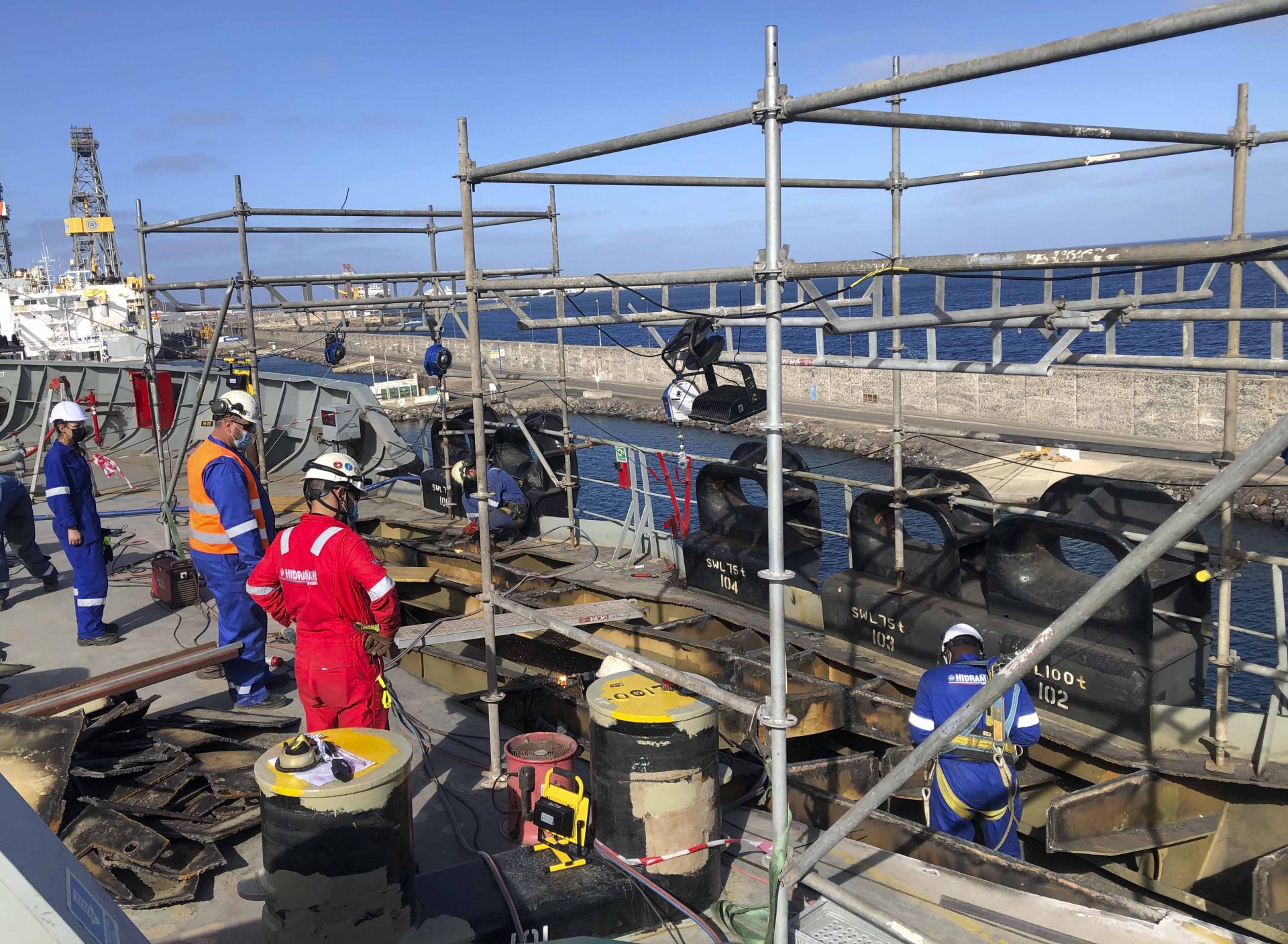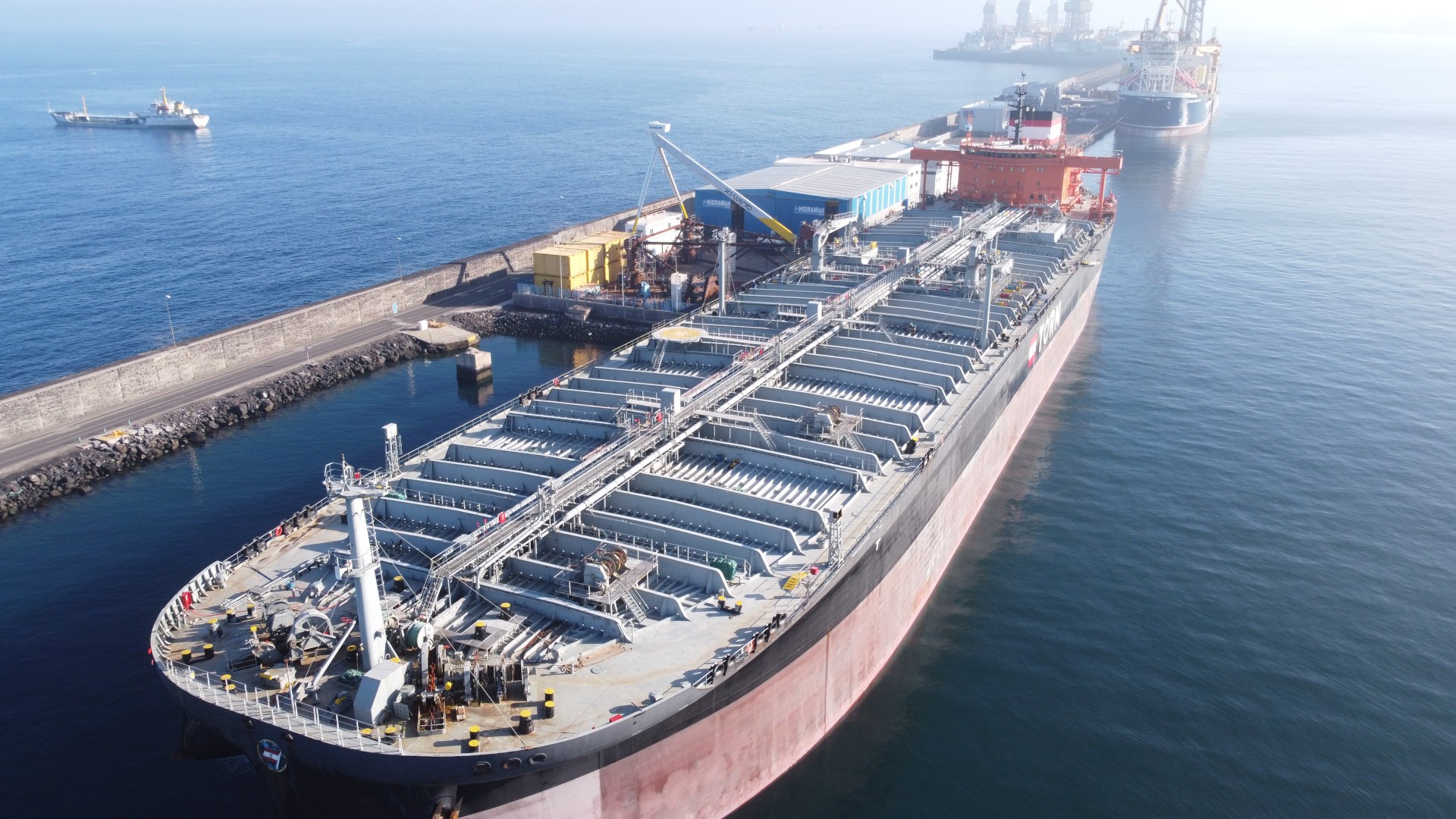Hidramar Group Takes on Hull Repair of a Crude Oil Tanker Vessel
Hidramar Group recently repaired the hull of a crude oil tanker vessel.
The vessel had an overall length and breadth extreme of 249.98*44.03m. It was delivered on time in our berthing line, and it required a team of 50 people with a grand total of 2397 man hours to complete. The project was completed in seven days as, allowing our client to avoid downtimes, saving them money in the long-run. By the end of the project, a total of 20 tons of steel have been used on the repairs of the vessel.The vessel had an overall length and breadth extreme of 249.98*44.03m. It was delivered on time in our berthing line, and it required a team of 50 people with a grand total of 2397 man hours to complete. The project was completed in seven days as, allowing our client to avoid downtimes, saving them money in the long-run. By the end of the project, a total of 20 tons of steel have been used on the repairs of the vessel.
The damages the oil tanker had:
After an incident, the oil tanker vessel suffered heavy damages on the main deck section. Repair plan was proposed and agree during the kick off meeting between customer, DNVGL and Hidramar Group.
Tasks needed to complete the scope of work
⦁ Inspection to get the gas free certificationThis was the most important part of the project. The inspection required to obtain the gas-free certification is essential to avoid any possible situation that could present a safety issue.A gas-free certificate is issued by yard chemist as evidence that the vessel/tank has been tested, using the approved testing instruments. The gas-free certificate is certified to contain 21 per cent oxygen by volume and adequately free from toxic chemical as well as hydrocarbon gases for a specified purpose, for example, tank entry and hot work.The certification is obtained after all the conditions and cleanliness of the cargo holds, sealing of holds (the space where cargo is carried in ships), stowage (amount of room available for stowing containers on a ship), and lashing being free of any gas are met. Once these conditions are met, the team is permitted to execute hot works like welding, steelworks, pipework and/or steel fitting.
⦁ Consultation with Class Society for compliance requisites of the new steel welding seam locations.Ship classification society – a non-governmental organization that establishes and maintains the required technical standards used for the construction as well as operation of ships. The societies certify that construction of vessels comply with relevant standards as well as carry out regular surveys in service to ensure that there is continuing compliance with the standards.
⦁ Marking of plates on board according to the DNV surveyor.
⦁ Cutting upper damaged area.

⦁ Erecting of Scaffolds inside the tank and on the main deck. (the main deck is the topmost part of the ship that extends from the bow to the stern)(Scaffolds are also known as staging and refer to temporary structures used to support a work crew and their materials to help in the construction, maintenance, and repair of buildings, or in this case ships.)
⦁ Cutting longitudinal bulb beams, transversal bend reinforcements, and bulkhead FR267/272.
⦁ Prefabrication of plates, cutting according to the templates.
⦁ HB Profile, FB profile, and Plates Surface Preparation and Beveling.⦁ Dimensional control of pieces and joints.
⦁ Installation of stiffeners and bulkhead FR267 and 272.
⦁ Welding the installed stiffeners according to the WPS approved by the classification society.
⦁ Re-installation main deck plate damaged.
⦁ Non-destructive test (NDT) inspection of the butt welding with MPI. (These are methods that are powerful but non-invasive and are used to determine the integrity of a structure or component of a ship to discover any flaws, if there are any, without causing any damages. The NDT methods do not cause any harm, stress, or destruction to the materials being inspected.)
⦁ Primer and intermediate paint according to the scheme provided. The entire project was completed as per the said schedule of 7 days, avoiding downtimes for our clients and thus proving to be cost-effective.
What is an oil tanker vessel?
An oil tanker is a ship designed for the transportation of oil in bulk. There are two types of crude oil tankers: crude tankers and product tankers. The crude tankers transport large quantities of unrefined crude oil from the point of extraction to the refineries (an industrial plant where crude oil is refined after transformation into useful products such as fuel, kerosene petroleum, jet fuels, and fuel oils). Product tankers, on the other hand, are generally smaller and transport refined products from refineries to stations that are near consumer markets.
Due to the hazardous nature of the cargo these vessels carry, any fault discovered with an oil tanker should be attended to immediately. In this article, you will also learn about some of the dangers of not repairing a crude oil Tanker Vessel.
Hot works repairs onboard fully loaded oil tankers and LNG carriers
Hidramar group can also provide emergency repairs on fully loaded Oil carriers and LNG carriers, using hot works Habitats specially constructed and portable, a customizable structure specifically designed to facilitate hot work in Hazardous Zones 1 & 2. It is designed to be placed on non Gas free units and eliminates the need for costly, time-consuming shut-downs. The Habitat’s walls expand to suit the available space on the vessel and isolate the welding area, safely containing the heat-source by maintaining positive air pressure within. This positive-pressure system works in the same way as that of the accommodation block by creating a virtual air-lock within the Habitat and is maintained by means of continuous air-flow input and extraction. The ratio of 2:1 input to extraction guarantees that the Habitat is inflated at all times and that the air inside is always clean and free of outside contaminants.
In conclusion, The Hidramar group is your strategic partner for any kind of all-inclusive repair to the ship, ensuring the project is completed within the scope of what was pre-accepted and expected by the Class society. We can also have a short turnaround by using 3D scanning techniques, robotic and sub-arc welding capabilities, thus proving to be cost-effective to the client by reducing downtime.


Recent Comments